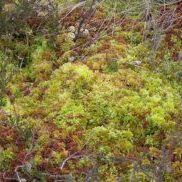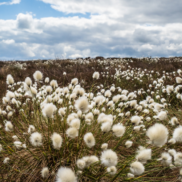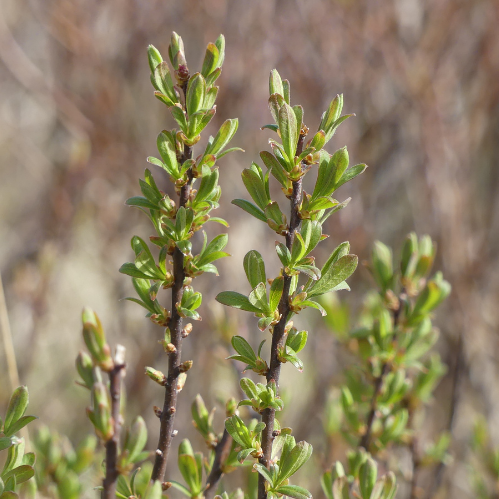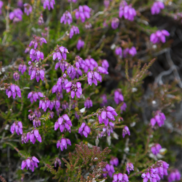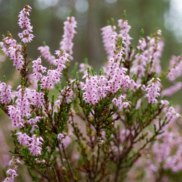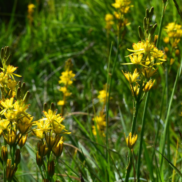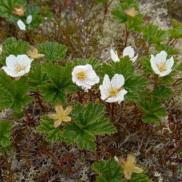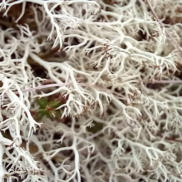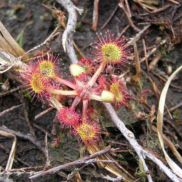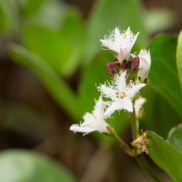The Secret Life of Peatlands
The importance of peatland as a carbon store has gained increasing recognition in recent years, but peat bogs also provide an interesting habitat in their own right. Far from being the bleak wasteland that is sometimes perceived, they support a wide diversity of plants that provide both ecological and cultural benefits.
Read our Technical Note (TN722) Identification of Moorland Habitats
The list below highlights some of the more common plants you can expect to find within areas of peatland. Each listing provides a little bit of information about the plant and an interesting fact about how it has and still can be used - click on the links to find out more.
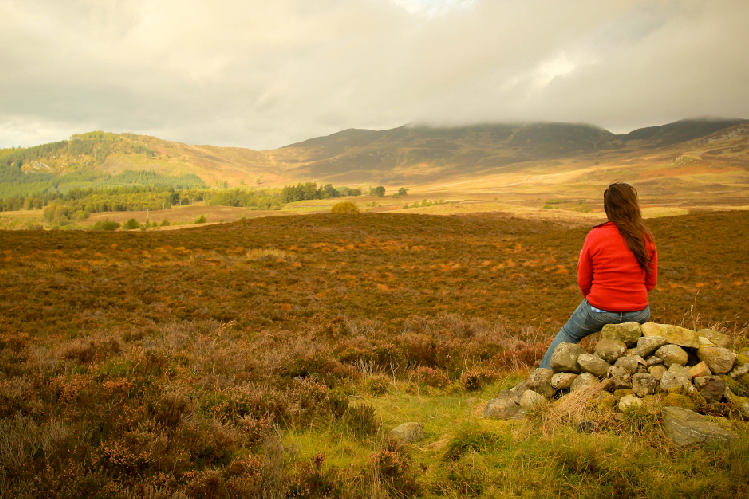
Sphagnum moss (Sphagnum spp.)
Peat is formed from plant material that does not fully decompose in acidic and anaerobic conditions, and sphagnum moss is one of the main contributors to its development. The rough surface of sphagnum moss can also slow down water run-off, helping to reduce peak flood levels downstream. There are at least 30 species of sphagnum moss in Scotland, with the greatest abundance and diversity on the wettest bogs and those in the north and west.
Interesting fact
Hare’s-tail Cottongrass (Eriophorum vaginatum)
Hare’s tail Cottongrass or Bog Cotton is a good indicator of areas where the peat is deeper than 50cm. It is widespread throughout Scotland but is particularly dominant on peatlands in the eastern Highlands, where it plays a major role in peat formation. It is also the main foodplant for the caterpillars of the Large Heath Butterfly. It is distinguished from two other cotton-grass species (which tend to grow in wetter hollows) by its single, rather than multiple, flower heads.
Interesting Fact
In the past it was used for candle wicks and to stuff pillows
Bog Myrtle (Myrica gale)
The aromatic Bog Myrtle is a common and widespread woody shrub on many blanket bogs as well as wet heaths in western parts of Scotland. It rarely occurs on bogs in eastern Scotland where it is much more localised in distribution. Bog Myrtle supports nitrogen-fixing bacteria in its root nodules and can therefore help to enrich soils.
Interesting Fact
Cross-leaved Heath (Erica tetralix)
This common species of heather is common and widespread on wet heaths and bogs and is most common in northern and western Scotland. It looks very similar to Bell Heather, which is found on dry heaths, but has paler, pink flowers and has greyish-green evergreen leaves around its stems. Flowering between June and September it provides a valuable food source for a wide range of pollinating insects including bees and moths.
Interesting Fact
Ling Heather (Calluna vulgaris)
Ling heather can be found more abundantly on dry heathland and in open woodland than it is on peatland, but it is still one of the most commonly occurring plant species on peat bogs, particularly where browsing pressure from deer and sheep has been low. Although dry heaths, wet heaths and blanket bogs are often lumped together as ‘heather moorland’ because of this, being able to distinguish the peatland areas is important so that they can be protected when planning muirburn.
Interesting Fact
Bog Asphodel (Narthecium ossifragum)
The abundant bright yellow spikes of flowers appear across bogs and wet heaths, particularly in western areas, from midsummer onwards. The flowers provide a valuable nectar source for pollinating insects and the spikes of orange seedheads persist well into winter.
Interesting Fact
Ingesting this plant can make cattle and sheep photosensitive and more likely to get sunburnt.
Cloudberry (Rubus chamaemorus)
This miniature relative of the raspberry and bramble particularly favours high altitude, drier peatlands. The large leaves and obvious white flowers are easily spotted, but the orange fruit is less commonly seen due to a predominance of male plants.
Interesting Fact
Lichens (Cladonia spp.)
The distinctive white, branching Cladonia lichens can be a prominent feature of heathland and sand dunes, and on peatland tend to occur on drier, high altitude bogs where they can be abundant and form a kind of crust across the surface of the vegetation. Cladonia lichens are an important food source for reindeer in Scandinavia but are vulnerable to excessive trampling and air pollution. Lichen-rich bogs are good indicators of very low impacts from grazing animals and of clean air.
Interesting Fact
Lichens are not plants - in fact they are a partnership 'symbiosis' between a fungus and an algae
Sundews (Drosera rotundifolia)
The tiny red and yellow sundew is one of the more unusual plants of peat bogs. Hairs on the leaves support sticky droplets that trap insects, which the plant then devours. This provides an additional source of nutrients in the acidic peatland habitat.
Interesting Fact
The 'dew' of round-leaved sundews once formed the basis of anti-ageing potions
Bogbean (Menyanthes trifoliata)
Bogbean usually grows in bog pools and other very wet areas, with rounded, three-lobed leaves rising out of the water. The name arose from the similarity of the leaves to those of broad beans. Spikes of pink-tinged, star-shaped, white flowers emerge from late spring onwards, looking exotic among the peatlands of the north and west.
Interesting Fact
Sign up to the FAS newsletter
Receive updates on news, events and publications from Scotland’s Farm Advisory Service

